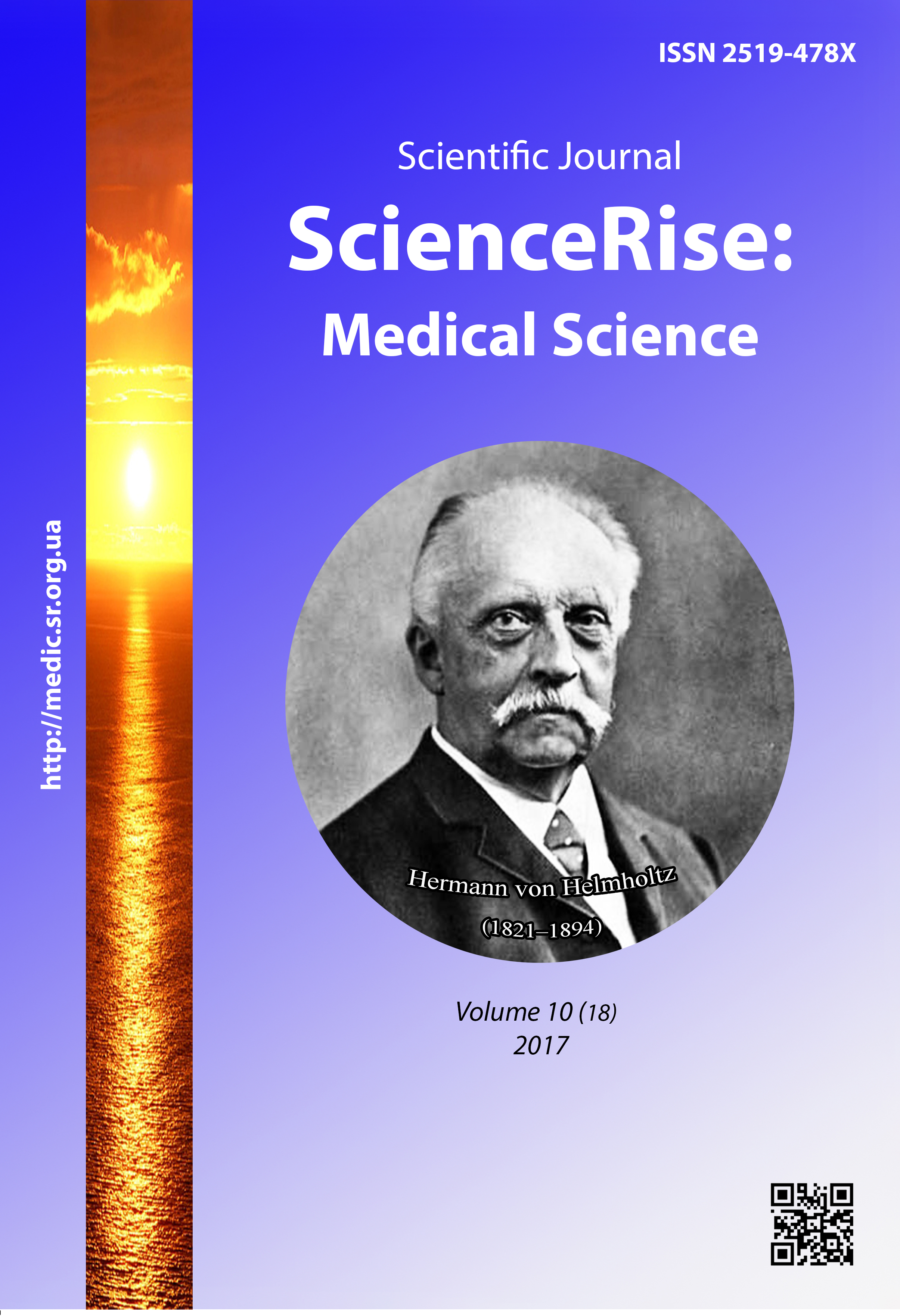Вибір тромболітика для лікування тромбоемболії легеневої артерії
DOI:
https://doi.org/10.15587/2519-4798.2017.113324Ключові слова:
тромбоемболія легеневої артерії, комп'ютерна томографія, індекс Міллера, тромболізис, стрептокіназа, альтеплазаАнотація
Тромбоемболія легеневої артерії (ТЕЛА) –захворювання з високим рівнем летальності. Досліджені результати лікування 102 пацієнтів з ТЕЛА після тромболізису. Встановлено що при масивній та субмасивній ТЕЛА доцільно застосовувати як альтеплазу так і стрептокіназу. Перевагу альтеплазі слід надавати при лікуваннігемодинамічно нестабільних пацієнтів, а стрептокіназі у пацієнтів з тривалістю захворювання більше 1 доби
Посилання
- Meyer, G., Vicaut, E., Danays, T., Agnelli, G., Becattini, C., Beyer-Westendorf, J. et. al. (2014). Fibrinolysis for Patients with Intermediate-Risk Pulmonary Embolism. New England Journal of Medicine, 370(15), 1402–1411. doi: 10.1056/nejmoa1302097
- Avdeev, S. N. (2009).Pulmonary embolism. Atmosphere. Pulmonology and allergology, 3, 1‒8.
- Bĕlohlávek, J., Dytrych, V.,Linhart, А. (2013).Pulmonaryembolism, part I: Epidemiology, riskfactorsandriskstratification, pathophysiology, clinicalpresentation, diagnosisandnonthromboticpulmonaryembolism. Exp. Clin. Cardiol., 18 (2), 129–138.
- Tereshchenko, S. N. (Ed.) (2010). Pulmonary embolism. Moscow: GEOTAR-Media, 96.
- Capstick, T., Henry, M. T. (2005). Efficacy of thrombolytic agents in the treatment of pulmonary embolism. European Respiratory Journal, 26 (5), 864–874. doi: 10.1183/09031936.05.00002505
- Konstantinides, S. V., Torbicki, A., Agnelli, G., Danchin, N., Fitzmaurice, D., Galiè, N. (2014). 2014 ESC Guidelines on the diagnosis and management of acute pulmonary embolism. European Heart Journal, 35 (43), 3033–3073. doi: 10.1093/eurheartj/ehu283
- Meneveau, N., Seronde, M.-F., Blonde, M.-C., Legalery, P., Didier-Petit, K., Briand, F. et. al. (2006). Management of Unsuccessful Thrombolysis in Acute Massive Pulmonary Embolism. Chest, 129 (4), 1043–1050. doi: 10.1378/chest.129.4.1043
- Krayz, I. G., Abdueva, F. M., Popova, E. I., Karpovich, D. I., Usan, N. Yu. (2012) Tactics of thrombolytic therapy in high-risk patients with pulmonary thromboembolism in the cardiological department of the Central Clinical Hospital of Kharkov. Emergency medicine, 3, 102–105.
- Parkhomenko, A. N., Irkin, O. I., Lutai, Ya. M. (2011). Thromboembolism of the pulmonary artery: algorithms for diagnosis and treatment. Emergency medicine, 3, 10–24.
- Markov, V. A., Vyshlov, E.V. (2011) Thrombolytic therapy in myocardial infarction monograph. Tomsk: STT, 148.
##submission.downloads##
Опубліковано
Як цитувати
Номер
Розділ
Ліцензія
Авторське право (c) 2017 Olexander Nykonenko, Andriy Nykonenko, Serhii Matvieiev, Viacheslav Osaulenko, Serhii Nakonechny

Ця робота ліцензується відповідно до Creative Commons Attribution 4.0 International License.
Наше видання використовує положення про авторські права Creative Commons CC BY для журналів відкритого доступу.
Автори, які публікуються у цьому журналі, погоджуються з наступними умовами:
1. Автори залишають за собою право на авторство своєї роботи та передають журналу право першої публікації цієї роботи на умовах ліцензії Creative Commons CC BY, котра дозволяє іншим особам вільно розповсюджувати опубліковану роботу з обов'язковим посиланням на авторів оригінальної роботи та першу публікацію роботи у цьому журналі.
2. Автори мають право укладати самостійні додаткові угоди щодо неексклюзивного розповсюдження роботи у тому вигляді, в якому вона була опублікована цим журналом (наприклад, розміщувати роботу в електронному сховищі установи або публікувати у складі монографії), за умови збереження посилання на першу публікацію роботи у цьому журналі.










